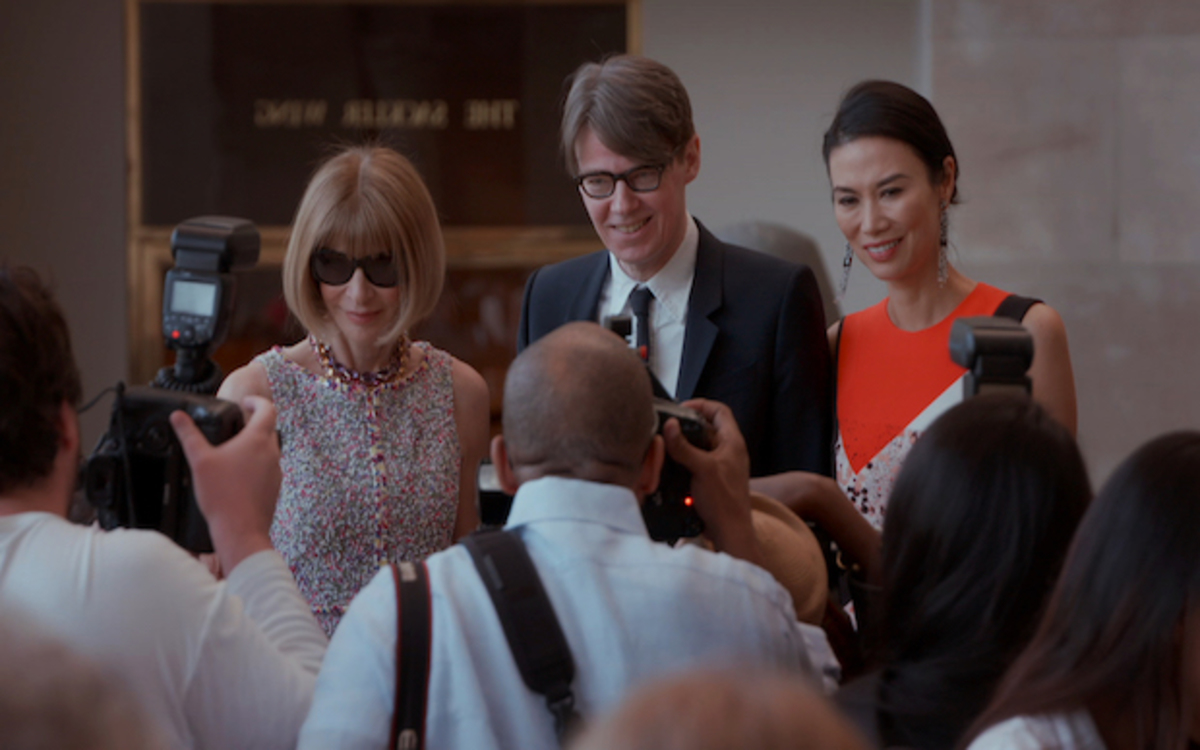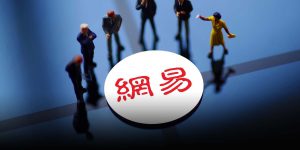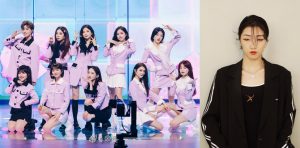Do couture fashion pieces belong in the world’s most respected art museums? While many art critics may be concerned that the fashion and art worlds are becoming increasingly intertwined, a new Condé Nast-produced documentary on the Metropolitan Museum of Art’s “China Through the Looking Glass” exhibition aims to sway viewers into the “yes” camp as it shows a behind-the-scenes glimpse at the planning of last year’s wildly popular Costume Institute exhibition and Met Gala.
Debuting at the opening of the Tribeca Film Festival in New York City on April 13, Magnolia Pictures’ The First Monday in May offers insider access to watch Vogue Editor-in-Chief Anna Wintour and Costume Institute curator Andrew Bolton plan the extravagant exhibition and its legendary celebrity-studded opening party. Directed by Andrew Rossi, the director of Page One: Inside the New York Times, the film features interviews with top fashion designers such as Karl Lagerfeld, John Galliano, and Jean-Paul Gaultier, as well as film director Baz Luhrmann.
The film was produced in association with Condé Nast Entertainment, Vogue owner Condé Nast’s production company, and gives significant screen time to the lavish details of the exhibition and party. As a result, the documentary serves as a long, glamorous commercial for the Costume Institute’s annual exhibition—and by default, for partner Vogue and for the fashion labels featured.
The film has already been a useful tool for reaching elite luxury consumers—global fashion e-tailer Farfetch, which is sponsoring the film’s Tribeca debut, held a special VIP dinner and screening last month in London that brought together celebrities and tastemakers. The special early access to the film likely came from the fact that Condé Nast’s parent company Advance Publications owns an 8 percent stake in Farfetch.

A still in The First Monday in May of Andrew Bolton with a gown on exhibit at “China: Through The Looking Glass” at the Metropolitan Museum of Art. (Courtesy Image)
For the element of drama in the documentary amidst shots of silk, sequins, and intricate beadwork, it reveals that the decision to create a “China”-focused fashion exhibition and gala based on Western stereotypes about China sparked many candid moments of debate between the planners. The “Looking Glass” theme of the exhibit was decidedly “controversial” for several reasons, Bolton notes on screen.
“The curators in the Asian Art Department were worried about some of the topics that the exhibit is addressing,” says Bolton at one point in the film. “It opens up debates about colonialism, Orientalism—which could be interpreted as being racist.”
In addition to Met curators, the Chinese voices involved in its planning such as socialite Wendi Deng Murdoch, Hong Kong tycoon Silas Chou, and legendary filmmaker Wong Kar-wai also express their concerns about the theme—Chou tells Bolton that many Chinese “are afraid your exhibition is too much only the past,” while Deng asks why they have to highlight the “dragon robe” style rather than more modern aspects of Chinese fashion.
In one scene, Wong shoots down Bolton’s idea to combine the classic Mao suit with Buddhist sculptures in one of the Department of Asian Art’s galleries, warning that it “will be an insult,” and “too sensitive” not just to the government, but to “the Chinese and also the Buddhists.”
One of the tensest moments regarding this issue in the film occurs when Wintour, Bolton, and the organizing committee head to Beijing to promote the exhibition. When a Chinese journalist asks if the focus on “fantasy” could lead to cultural “misinterpretation,” Wintour defensively snaps back, “Are you questioning the idea of fantasy in fashion?” Once the journalist is out of earshot, Bolton expresses his distaste for the question, whispering to Wintour, “I think she was really politicizing it—the idea of the West just plundering the East for inspiration. Or that it’s just about the past.”
“She just wants everything to start in 1949,” Wintour complains.

A shot of the dresses for the “China: Through the Looking Glass” exhibit. (Courtesy Image)
Bolton addresses the controversy by explaining that the exhibition is meant to “deconstruct the stereotypes” in the clothes and educate visitors about the fact that many of the dresses were based on racist 1930s film tropes such as the “dragon lady” (which the film notes is also an image often ascribed to Wintour).
But at the same time, Condé Nast and Vogue have advertisers to please, and those advertisers are frequently the fashion labels featured in the exhibition. Bolton notes that the exhibition is also aimed at highlighting the “romance” of the designs, even in the case of those based on racist stereotypes. The film isn’t shy about its goal of capturing the “romantic” aspects of the fashion, offering slow-motion camera close-ups that linger on the gowns in the exhibition and those worn by the celebrities.
It is this element of commercialization and the avoidance of overt criticism that make for awkward moments in the film—such as when Vogue’s social editor tells the camera on the Met Gala red carpet that she’s relieved none of the celebrities wore anything “wildly offensive”—right before noticing Sarah Jessica Parker’s garish headpiece and muttering that some, however, had opted for some “major headwear.”
The Department of Asian Art’s head curator Mike Hearn also clashes with the Costume Institute about whether or not the commercial fashion pieces are overshadowing the centuries-old Chinese art when displayed with it. “What’s key for the success of all of this is that there’s some conversation with the Chinese works of art so that it’s not just wallpaper,” he notes, adding that the exhibition shouldn’t look like “Disneyland.”

This question of whether or not fashion is “worthy” of being exhibited alongside art in the Met is the main idea addressed by the documentary, and the sumptuous cinematography makes it clear that the film is unequivocally a fashion magazine company’s take on the issue. While legendary art critic Holland Cotter wrote in his New York Times review of the exhibition that “art is reduced to being a prop in a fashion shoot,” the documentary gives a platform to Condé Nast to make the claim that this isn’t a bad thing.
“In the world that we work in, you need the mixture of art and commerce,” Wintour argues pragmatically. “You need both. Too much of one or the other would not work. They have to exist hand in hand.”
Although they go hand in hand in the exhibition, the film tends to dedicate more time to pointing out the benefits to the museum than those the brands receive from being showcased at such an institution. The ending credits note that “China: Through the Looking Glass” was one of the Met’s five most-visited exhibitions ever, raising a record $12.5 million and attracting 670,000 visitors—many of them Chinese tourists. While this was certainly a benefit to the museum, it’s harder to put a price on massive amount of publicity—and more importantly, the prestige—afforded to the fashion labels lucky enough to be a part of it.
— This story first appeared on Jing Daily






